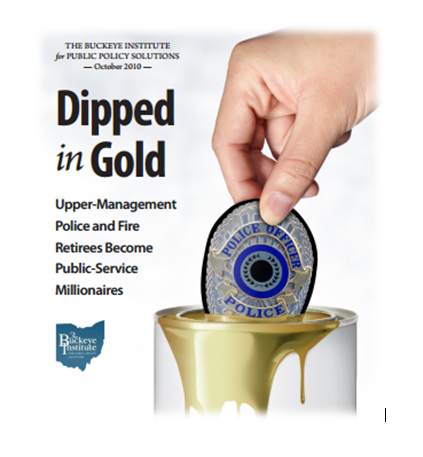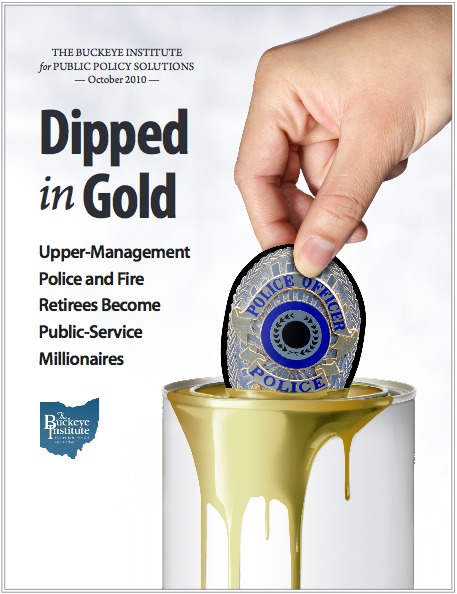Why This Report Matters To You
Of all our civilian government workers, none are more critical to our safety than the men and women who serve as police officers and firefighters. On a daily basis, they risk their lives to protect us. Therefore, we must make sure our police officers and firefighters are paid decent wages and, when injured or killed in the line of duty, done right by. Honoring that commitment, however, does not mean that upper management employees should be made millionaires.
Making public servants millionaires when they retire is not a bargain you agreed to as a taxpayer. The secretive Deferred Retirement Option Plan (DROP), which allows public safety officials to double dip, is yet another program created by our governmental leaders that is totally disconnected from the economic realities facing most Ohioans.
In 2009, over 70 percent of Columbus’s operating budget was allocated to police and fire, with the average expenditure per public safety employee totaling $128,977. With few police officers and fire fighters earning salaries this high, it begs the question: Where is all this money going? Quite simply, the money goes toward funding the gold-plated pension packages of public safety officials.
As a taxpayer, you are on the hook to contribute 19.5 to 29.5 percent of each police officer’s salary and 24 to 34 percent of each firefighter’s salary to the Ohio Police & Fire Pension Fund (OP&F). Your contribution is so high because of costly programs like DROP.
With DROP, after officers reach age 48 and have worked for 25 years, they can retire on paper yet still continue to work while their pensions accumulate in untouchable accounts. When they exit DROP after working another eight years, many in upper management receive lump sum payments of nearly one million dollars. And make no mistake, the officers who receive large lump sums also collect yearly pensions over $100,000 for the rest of their lives.
While police officers and firefighters can retire as public service millionaires in their 50s, you are not so fortunate. Private-sector employers typically only contribute a 4 to 5 percent match to your retirement fund. Additionally, most Ohioans cannot collect Social Security until age 67. Even then, the maximum amount you can collect annually is approximately $28,152. With this being the single worst decade for investors since the 1830s, we cannot afford to pay for the gold-plated DROP program, especially at a time when Ohioans bear the seventh-highest state and local tax burden in the country.
To read the rest of the report, click here: Dipped in Gold.
This report was written by Mary McCleary while she worked at The Buckeye Institute.


